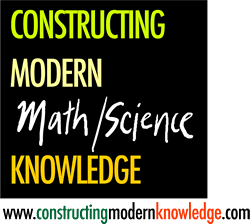David Warlick's
most recent blog and the congratulatory support of his readers confuses me.
Let me begin by sharing a portion of his article with which I agree:
Our efforts should not be to integrate technology into the classroom, but to define and facilitate a new platform on which the classroom operates. When the platform is confined by classroom walls, and learning experiences spring from static textbooks and labored-over white boards, and the learning is highly prescribed, then pedagogy is required.
However, I am left to ask, "What do learners
DO in the world of pretty diagrams, false dichotomies and networked learning platforms promised in
Warlick's blog?"
However, if the platform is a node on the global network; with text, audio, and video links to other uncountable nodes on the network; and the connections are real time and clickable, and tools are available to work and employ the content that flows through those connections; then the learning happens because learners have experienced personal connections — and they want to maintain those connections by feeding back their own value. (Warlick 1/13/08)
I don't teach from textbooks or white boards and never did. My teaching has been far from prescriptive, whether face-to-face or online. This was all possible without the technology platform Warlick fashions for educators of the future. Understanding how meaningful, personal, non-coercive, creative, constructive, collaborative learning environments have been created, and in some cases sustained, around the world should be a pre-requisite for anyone professing a desire to reinvent education.
I love talking, chatting, Skyping, Twittering, blogging,
Mogging (yup, it exists) and writing as much as the next guy, but a very small percentage of knowledge is constructed by talking. Much is not. I remain unconvinced that the most vocal proponents of Web 2.0 offer a vision of technology use outside of the language arts or perhaps social studies curriculum. With all due respect, talking about math or science is not the same as being a scientist or mathematician.
Papert originally offered a vision of how computers make that possibility a reality.
Learning is an active process with the learner at its center. It is not dependent on instruction, online or face-to-face. I got excited about computing thirty years ago because it allowed me to make things that did not exist before or were beyond my reach. It amplified my creative abilities. Playing jazz and computer programming afforded me a community of practice of like-minded people, of various levels of expertise and shared objectives.
I have since come to understand how knowledge is the result of active purposeful construction and that computers often unprecedented opportunities to explore new domains and engage in a much wider range of projects than have ever been possible before. As Papert says, "If you can make things with computers, then you can make a lot more interesting things." The process of computer programming was as creatively rewarding and intellectually satisfying as composing music or engaging in a well-reasoned argument. What are examples of the "artifacts of learning" that Mr. Warlick "breeds?"
I fear with all my being that the remarkable potential of computing and the promise for innovation and school reform it once embraced will be lost if all we focus on is the "well-reasoned debate" at best, and looking stuff up, PowerPoint or web quests at worst.
I do not mean to diminish for an instant the power of the Internet. I have personally been online since 1983 and teaching online for more than a dozen years. I used an acoustic coupler to connect from my bedroom to a mainframe in the late 1970s and remember when my Australian host invited her neighbors over to watch me check my email in 1990. I led collaborative online education projects in the late 1980s. As I write this paragraph, even I ask myself, "SO WHAT?"
The network begins at home. Isn't there MUCH more we can do to make the existing learning environments more social, collaborative and meaningful whether electricity is involved or not? Why do we constantly jump from melodramatic tales of school to some utopian world of online alchemy?
It may be ill-advised to project onto children or the educational system an adult's excitement about how social networks have reduced their sense of isolation, answered a tech-support question or even helped shape their personal identity.
I sense that we have gone beyond the tipping point of what Seymour Papert calls "verbal inflation." We are terribly excited about so very little.
David's triad of "electronic portfolios," "course management systems" and "social networking" offers not a single clue for a teacher yearning to make school a more hospitable place for learning nor provides a child one ounce of leverage against the system many of you proclaim a desire to reform. In fact, electronic portfolios and course management systems are clear tools of the existing system.
I do happen to agree with David Warlick's concern about the cacophony of meaningless euphemisms being bandied about, but cannot help but notice the number of additional ones introduced in the comments to his blog.
Labels: david warlick, educational technology, Gary S. Stager, progressive education, web 2.0
 A young vibrant gifted urban science teacher expressed a concern to me yesterday. The teacher suggested that he feared being forced to teach "ELA" (English Language Arts) since that is all the district cares about given the testing mania destroying our nation's public schools.
A young vibrant gifted urban science teacher expressed a concern to me yesterday. The teacher suggested that he feared being forced to teach "ELA" (English Language Arts) since that is all the district cares about given the testing mania destroying our nation's public schools.